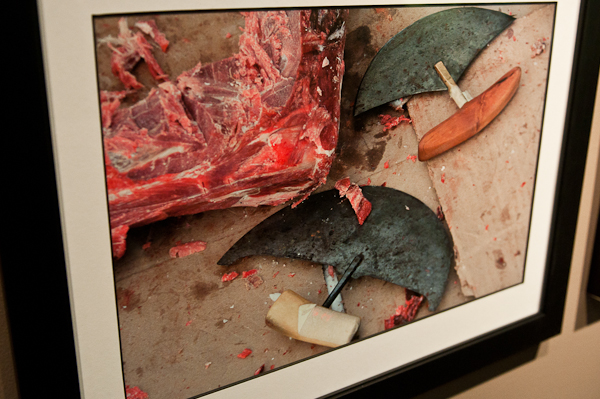
La Petite Mort Gallery opened its Moveable Feast, a group exhibition comprised of 20 curators and 20 artists on Aug 3.
“I knew that the end result would be a massive clusterfuck of what everyone perceives the theme to be,” said Guy Bérubé, gallerist at La Petite Mort.
Bérubé said the exhibition’s title, borrowed from Ernest Hemingway’s posthumous memoir, actually infers an international theme.
“I love the phrase [moveable feast] because it’s so general. Some people thought of ‘moveable feast’ as a perspective on food but it’s about travel. If you look at the images, you can see it’s all over the map,” Bérubé said.
The exhibition featured twenty curators choosing 20 pieces independently of one another and from any theme they desired.
From Victoria Courtney’s “Canis Study,” a composition of realistic ink-rendered wolves, to Julie Hodgson’s enigmatic, black and white photograph of a tree, entitled “The Origin of the World,” the pieces exemplify great breadth.
At the opening, artists and curators mingled as they scoped out other pieces in the collection.
“They’re all here making comparisons to what they chose and I can see that some of them are quite excited about their choice. Some of them are thinking, I should have gone further, so I like the idea of repeating this and seeing how people could maybe take it further each time we do it,” Bérubé said.
Artist and Carleton alumnus Barry Pottle took the theme with a more literal context.
“I look at it in terms of the feast that we have in the country. When we come together, have celebrations and meetings, we tend to have a feast of country food. I look at it in that context and think, oh, this would be interesting to see if Inuit art would fit in that and I think it has.”
Pottle’s photograph “After the Cut”, shows a piece of raw meat after it has been cut.
“[I’m] trying to bring awareness to our urban Inuit,” Pottle said.
Pottle is known for his photographs which advocate for better rural food access for people in the North, who struggle with the expensive costs of modern food.
“It gives you an opportunity to be really surprised by some of the work you normally wouldn’t see or seek out,” curator Remco Volmer said.
For some, the feast left a bitter aftertaste. Viewer Andrea Lewis said “there are certain pieces that I simply cannot connect with. Pointing to one of Ashkan Honarvar’s graphic collages, she said that it was “just a little too in my face Honarvar’s collages, collectively entitled “The Age of Adz,” explored the darker side of the human body and its beauty. His figures are formed from sections of the body, cut up and mashed together to form a graphic whole.
Artist Meaghan Haughian enjoyed the exhibition and its novelty.
“I think it’s really fun. [Bérubé] is always trying different things and it’s an interesting concept.”
Bérubé attributes this to his openness in subject matter.
“I think that I kind of have a wide range of what I do. But in my wide range it doesn’t necessarily repeat itself. I like to surprise people.”





